“Zul, hurry up…we’re going to be late. I think Maulana is already there!” Zulkifli Singapore invites Zul to Nabawi Mosque. Zulkifli is one of his friends from Singapore. Due to the fact that there are several students there named Zulkifli, each has their own moniker, to help differentiate them from each other among their peers and masyaikhs. Here, is the place where Zul is first known by his now-famous sobriquet Zulkifli Mohamad al-Bakri. Customarily, every two years the worldwide leaders of Jama’ah Tabligh will go to Mecca and visit Medina. In the year 1991, when Zul was a second-year student at Islamic University of Medina, he already owns Mazda 929 which is driven by Khairul for them both to travel anywhere.
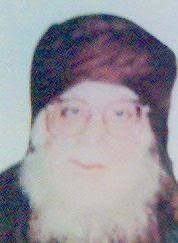
Maulana In’amul Hasan
Khairul speeds off leaving the dormitory which is about 15 minutes journey to their destination together with Zulkifli Singapore and Zaini. The three friends were excited to finally be able to meet Maulana Hadratji In’amul Hasan who was visiting Nabawi Mosque. He is third Amir of Jemaah Tabligh after Maulana Yusuf Khandhlawi passed away in 1965. Up till 1991, it has been 26 years he holds the position shouldering the responsibility as the Amir in his age that nearly reaches 73 years. He’s a graduate of Madrasah Kashif-ul-Uloom, Nizamuddin, New Delhi and Mazahir Uloom Saharanpur. Subsequently, Maulana Hadratji In’amul Hasan wakaf (give himself away) his whole life to dakwah efforts around the world.
In Nabawi Mosque, a multitude of people has started to fill the mosque. Most are from India, Pakistan, Bangladesh and those who follow tabligh. Zul who was amongst the sea of people could see, from afar, a man in a wheelchair is pushed through the crowd entering the mosque through Bab al-Nisa’. “There, the Maulana has arrived! Wait, I know the person wearing a kurta beside the Maulana. He’s Maulana Umar Palanpuri. People call him the Tabligh’s Voice. The first time I met with both scholars was when I was just 13 years old. It was in an ijtimak held in Bukit Besar at the time.” Zul whispered to Zaini. Everyone stands up as both of them walked past them as a sign of respect for them both and others start to crowd them trying to shake hands with them. However, due to health factors, his assistant turned the crowd away. The congregants moved aside, giving way for him to reach the Rasullullah PBUH’s tomb. For those who has a camera with them, it was a great opportunity for them to take a picture. Zul who actually brought his camera with him was unfortunate enough to have left his Kodak back at his dormitory. Such situations are hard to come by, except when there were any visits from great scholars to Medina. He was also accompanied by the masyaikh from Markaz Nizamuddin.
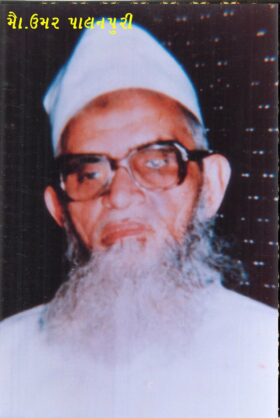
Maulana Umar Palanpuri
Maulana Hadratji In’amul Hasan then proceeded to perform 2 rakaat sunnah prayer and tafakkur for a while there. Syeikh ‘Abdullah al-Zahim, the Imam of Nabawi Mosque who happened to be there asked the others present, “Who’s that?” They answered, “That is Maulana In’amul Hasan, a great scholar from India.” Scholars from India is less known in Saudi Arabia, except for Maulana Abu al-Hasan ‘Ali al-Nadwi. Getting to meet the Maulana once again, Zul get the sense of déjà vu as the bayan delivered reminded him of the ijtimak he attended in Bukit Besar, 9 years ago. At the end of the brief ceremony, Zul witnesses for himself the audience holding one end of a long rope and the other end is held by Maulana In’amul Hasan, symbolizing their bai’ah with him as the Amir of worldwide Jemaah Tabligh.
******************
“Zul, do you want to join me at Syeikh Hammad al-Ansari’s house tonight?” Dr Radzi Osman greeted and invited him one morning. Dr Radzi Osman is a lecturer at Malaysia Science University (USM), a PhD graduate in the field of Hadith from the Islamic University of Medina. He returned to Medina to undergo his sabbatical leave here. Syeikh Hammad bin Muhammad al-Ansari al-Kazraji al-Sa’di was born in 1343 Hijrah in a state known as Tad mecca, Mali, adjacent to West Africa. Al-Sa’di is a name that refers to Sa’ad bin Ubadah who was a companion of the Prophet PBUH. It is said that signs of greatness and honour are apparent in Syeikh as he has always loved knowledge ever since he was very young.
His life with his uncle who is also a great scholar gave him ample opportunity to live his life surrounded by knowledge. Syeikh Hammad al-Ansari began to memorize the Quran at the tender age of eight years old, while concurrently learning lessons on linguistics and nahu, hadith and a lot of books before he even reaches puberty. He memorized matan al-Kafiyah wa al-Alfiyah by Ibn Malik, al-Alfiyah by al-Suyuthi, Jam’ al-Jawami’ by al-Subki, al-Mu’allaqat and many others.
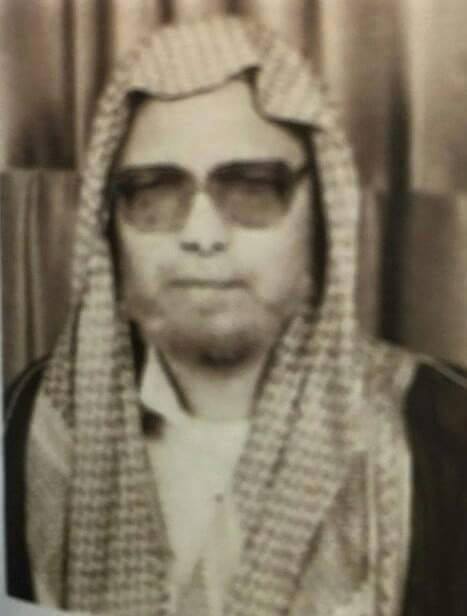
Syeikh Hammad al-Ansari
He moved from his home state due to the French colonisation. When he was 21 years old, he moved to Mecca and here he starts to attend halaqah at Masjid al-Haram. Among his teachers were Syeikh Hamid al-Faqqi, Syeikh Abdullah al-Masyyath and Syeikh Muhammad Amin al-Halabi. He consistently went to the halaqah there, never missing a class which eventually led to Syeikh Abdullah bin Hasan Aal al-Syeikh decision to give his permission to teach in Masjid al-Haram.
Afterwards, he moved to Medina and get to learn from several teachers in Dar al-‘Ulum. Among them are Syeikh Muhammad al-Hafiz, Syeikh Umar Barri, Syeikh Abduh Khudai’ and many others. Later, he returned to Mecca. During hajj season, he met with Syeikh Abdul Latif bin Ibrahim and Syeikh Muhammad bin Ibrahim Aal al-Syeikh. Both these syeikhs advised him to move to Riyadh. There, he worked as a teacher in Shariah Kulliyyah before he moved to Ma’had Imam al-Dakwah al-‘Ilmi. After working there for several years, he returned back to Shariah Kulliyyah before being transferred to the Islamic University of Medina.
His love for both knowledge and his students are clear for Syeikh Hammad al-Ansari. This is proven when he spent most of his time to revise and he is the person scholars and students alike will always refer to. Furthermore, his library is also among the favourite places for knowledge lovers for it is filled with multifarious fields of knowledge reference books. Moreover, he likes to collect old manuscripts especially in the field of hadith. He wrote several books related to hadith throughout his life.
Due to his immense love for knowledge, many wanted to be his student. Among his students and those who narrate sanad (continuous chain of knowledge from one scholar to the next) from him are Syeikh Abdullah bin Jibrin, Syeikh Bakar Abu Zaid, Syeikh Rabi’ bin Hadi, Syeikh Soleh al-‘Abud, Syeikh Soleh Ali Syeikh, Syeikh Ali al-Faqihi, Syeikh Soleh al-Suhaimi, Syeikh Athiyyah Salim, Syeikh Muhammad bin Nasir al-‘Ajami, Syeikh Abdul Razzaq al-Badar, Syeikh Umar Fallatah and many other scholars.
Among his published works are al-Ajwibah al-Wafiyah ‘an Asilah al-Alfiyah, Abu al-Hasan al-Asy’ari wa Aqidatuhu, Tuhfah al-Sail ‘an Saum al-Murdhi’ wa al-Hamil, Ithaf Zawi al-Rusukh bi man Dallasa min al-Syuyukh and Sabil al-Rusyd fi Takhrij Ahadith Bidayah Ibn Rusyd.
Zul was thrilled to get to visit the magnificent house of Syeikh Hammad al-Ansari. It is a double story house with 2 levels of a library in the basement. They meet in the basement, where scholars and students gather who were Masters and Doctor of Philosophy students. Also, there was Zul’s teacher Syeikh Muhammad ‘Ali Thani. In front of Syeikh Hammad al-Ansari, 3 telephones were neatly placed of which all of them were ringing incessantly. “Syeikh is so busy…” Zul whispered to himself, shaking his head in disbelief. Every call was a question regarding a fatwa and the Syeikh will answer each of them with ease and spontaneously.
“Thank you for calling. You asked whether supplication is considered as worship. My answer is, it’s true. Since supplication is a type of worship, then most scholars considered, worship is halted for the nas and implementation. This is stated by usul scholars,
الأَصْلُ فِي العِبَادَةِ التَّوَقُّف
This maxim is mentioned by many scholars such as Ibn Hajar in Fath al-Bari. Likewise, it is also stated in Syarh Zaid Ibn Ruslan, in Syarh al-Zurqani on al-Muwatta’, and al-Adab al-Syar’iyyah by Ibn Muflih and Nail al-Autar by Imam al-Syaukani. Wallahu a’lam.
The second phone rings.
“Wa’alaimussalam. Yes, yes. It’s restricted for men to shave their beards. The Prophet PBUH said:
أَحْفُوا الشَّوَارِبَ وَأَعْفُوا اللِّحَى
“Cut the moustache down and leave the beard.” [1]
Rasullullah PBUH said:
خَالِفُوا الْمُشْرِكِينَ، وَفِّرُوا اللِّحَى، وَأَحْفُوا الشَّوَارِبَ
“Do the opposite of what the polytheists do; let the beard grow long and clip the moustache.” [2]
When commenting on the above hadith, Imam Ibn Hajar al-Asqalani Rahimahullah said: The instruction from the Prophet PBUH regarding keeping one’s beard means, don’t cut it and let it grow. [3] As for keeping and maintaining one’s beard, it is to just let grow without changing it, hence, Malikiah and Hanabilah scholars ruled shaving it is prohibited and it is not makruh to cut it even if it is more than a handful as well as it is also not makruh to cut one’s beard that grows underneath one’s Adam’s apple, for it follows the example of the act by Ibn Umar. Whereas, Hanafiah scholars ruled shaving one’s beard as makruh tahrim. While Syafieyyah scholars ruled it as makruh tanzih. Al-Nawawi in Syarh Muslim stated the ten matters which is makruh for one’s beard and among them is to shave it, with the exception if beard grows on the face of a woman, then it is sunnah to shave it. Wallahu a’alam.
He puts down the phone as the students there are busy writing down important notes from the conversations. In awe, Zul stands and observes as he feels as though he has entered into another realm. Such is the effect Syeikh Hammad al-Ansari had on people around him due to his immense knowledge. He is like a moving, talking library where thousands of books are stored.
“I’ve just received a great question from someone. He asked regarding the ruling of raising one’s hands when supplicating and wiping one’s face afterwards.” Syeikh said, sharing his experience with all the guests present.
“The question reminded me of when I was still in Mecca, once upon a time. I was supplicating in Masjidil Haram with my hands raised and after I finished my supplication, I wiped my face with my hands. A young man reprehended me, saying that it is not the act of the Prophet PBUH. I argued and stated several hadiths to support my assertion. Alhamdulillah, due to the reprimand of the young man, when I returned, I referred back to several hadith books and found numerous narrations which mentioned the Prophet PBUH raised his hand when he was supplicating. Among them are narrations from al-Bukhari, al-Tirmizi, Ahmad, al-Nasaie and others. Furthermore, Rasullullah PBUH also wiped his face after supplicating as stated by ‘Umar al-Khattab in a hadith narrated by al-Tirmizi. Imam al-San’ani stated that this hadith has several supports (syawahid). Among them is from Abu Daud from a narration of Ibn Abbas R.anhuma and others. Hence, with the existence of all the routes or narrations, it elevates the hadith’s status to hasan.”
*******************
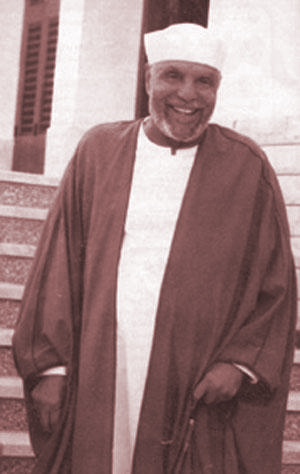
Syeikh Mutawalli al-Sya’rawi
Syeikh Mutawalli al-Sya’rawi once visited Medina. His visit was widely covered in the media. Unfortunately, Zul couldn’t spare his time to go and meet the renowned preacher and tafsir scholar due to his class schedule.
During his visit to Medina, the Syeikh recited a poem that creates a polemic amongst the great scholars in both Mecca and Medina. Syeikh Mutawalli al-Sya’rawi recited the following poem in front of King Fahd bin Abdulaziz,
يا ابن عبد العزيز* يا فهد شكرًا
أنت ظل الله في الأرض * تحيا بك البلاد أمنًا وسرًا
“O son of Abdulaziz * O Fahd, I thank you
You’re Allah’s shadow on this earth * This country’s is honoured for you, peace and protected!”
His statement contrived an uneasiness amongst aqidah, hadith and Arab language and literature scholars. Some linguists who support him said that it is just a parable (majaz) and nothing more. Some hadith scholars disagree and oppose the statement saying, “It is a problematic hadith. Among those who criticize the narration is Imam Abi Hatim who when asked by his son regarding this hadith narrated by Anas, then answered, it is a munkar hadith and one of its narrators named Ibn Abi Rukbah is majhul!” While aqidah scholars are strict in this matter stating, “Syeikh al-Sya’rawi has raised the King too far by comparing him akin to Allah SWT! This is outrageous!”
“I’m curious about your opinion on the matter, Zul,” Hakim Zainal said. Zul laughed and replied humbly, “You’re studying in the field of lughah (laguage). Surely, you’re better than I am. Just from what I see, Syeikh Mutawalli is a poetic man in terms of the language he uses, his reflection on the verses of the Quran is deep and profound. I’ve heard a lecture of his on a cassette where he discusses Allah SWT’s statement:
يَا أَيُّهَا الَّذِينَ آمَنُوا أَطِيعُوا اللَّـهَ وَأَطِيعُوا الرَّسُولَ وَأُولِي الْأَمْرِ مِنكُمْ
“O you who have believed, obey Allah and obey the Messenger and those in authority among you.” [5]
“He stated, the commandment to obey the ruler follows after the commandment of obeying Allah and obedience to Rasullullah PBUH. This shows that obedience to a ruler is when the ruler obeys Allah SWT and Rasullullah PBUH in order for the people to be protected with faith and from oppression under the ruler. So, every ruler is commanded to fulfil his responsibility perfectly for each ruler is also commanded to obey Allah and His Messenger. If this is not so, Syeikh simply classifies them as tyrant rulers. [6] Hence, in my opinion, Syeikh’s statement is just a parable to honour King Fahd. It’s nothing more than that…”
Such is the great influence Syeikh Mutawalli al-Sya’rawi has, his words of just a sentence, were of such great value that they were discussed and debated by various scholars from different fields. Zul was greatly inspired by him and held him in high regard that he would always refer to Tafsir al-Sya’rawi which was first published weekly by Akhbar al-Yawm in Egypt ever since in the year 1991.
**************************
“Jaafar, have you read the Maza Khasira al-‘Alam bi Inhitat al-Musliminbook? It was written by Maulana Abu al-Hasan ‘Ali al-Nadwi.” Zul asked Jaafar. “I have. It’s such a good book. People say it is as tough the pillars of al-Azhar Mosque was shaken when the book first arrived in the land of Egypt. Al-Azhar’s scholars were impressed with the appearance of an Indian scholar who could discuss the issue of the Muslim ummah in such exceptional discourse using excellent Arabic.” Jaafar answered. Hakim Zainal who was there interjected, “Last week, he came to give a lecture at Maktabah malik Abdulaziz. Many masyaikh attended the lecture. I heard even Syeikh ‘Atiyyah Salam went to the lecture.” Zul hunched down and said meekly, “Yeah, it was such a loss I didn’t get to go. I had class at the time…”
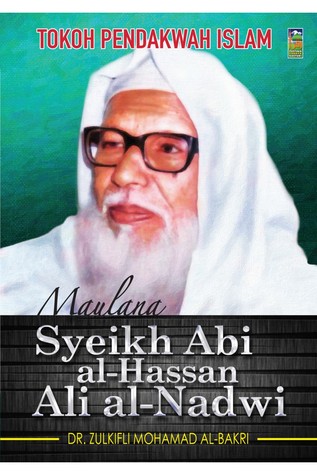
Published by Pustaka Cahaya Kasturi
Maulana Abu al-Hasan ‘Ali al-Nadwi were among the scholars who had travelled far and wide in conveying dakwah, delivering lectures in seminars and muktamar across the globe. The first time he ever travelled out of India is in the year 1947 where he travelled to Mecca, whilst his last journey was to Dubai in 1999. Mecca and Medina are among his must place to visit every one or two years. Je once visited Malaysia in 1987 when he was invited by ABIM, Kedah Scholars Association and Maahad Tarbiah Islamiah Derang. In Malaysia, among the states where he visited were Kedah, Terengganu, Selangor and Kuala Lumpur.
“If you want to know, during his visit in Terengganu, Maulana Abu al-Hasan al-Nadwi gave a sermon at Markaz Tabligh Kubang Bujuk, SMAASZA, Rusila. My friend who attended the sermon said, Tuan Guru Haji Abdul Hadi Awang act as the translator. Maulana deliberates on the story of Rib’I ibn Amir and the Persian Commander, Rustum.”
He’s also concerned about the issue in Palestine and does not consider it just a state issue, or the issue that only involves the citizens of Palestine or the Arabs, rather it is an issue of the Muslim ummah as a whole. Thus, all Muslims should rise and take note of the dangers it poses if left alone. “For me personally, other than the book Maza Khasira al-‘Alam bi Inhitat al-Muslim, al-Muslimun wa Qadiyyah Filistin is also a great book. Insya-Allah, one day I want to write a biography of Maulana.” Zul said to both Jaafar and Hakim Zainal.
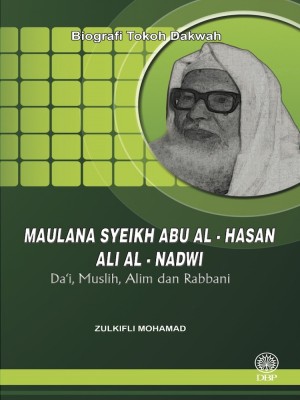
Published by Dewan Bahasa and Pustaka
**************************
During his studies at the Islamic University of Medina, Syeikh Nasiruddin al-Albani has moved to Jordan and was no longer the lecturer at the Kulliyyah Hadith Islamic University of Medina. ZUl have read several books that he had written, among them are his Syarah and commentary for al-‘Aqidah al-Tahawiyyah, Silsilah al-Ahadith al-Sahihah and Silsilah al-Ahadith al-Da’ifah.
One evening, he received news that Syeikh al-Albani was at Nabawi Mosque. Immediately, Zul and Khairul rushed to meet the famous hadith scholar. When they arrived, they saw him leaning on a pillar surrounded by masses of people. Zul and Khairul sat amongst the hundreds of people there at the time.
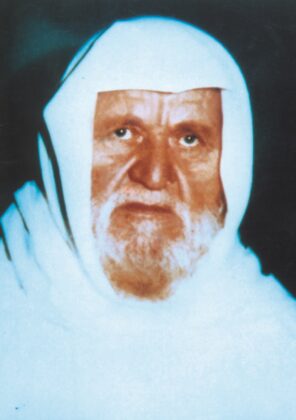
Syeikh Nasiruddin al-Albani
“Syeikh, what is the ruling of practising a dhaif hadith?” a person asked from the crowd. “In my opinion, it cannot be an absolute matter to be practised, even if it is the matters of fadha’il amal, even more so when it is in the matters of rulings. True, the famous opinion among hadith scholars states that it is permissible to be practised on certain conditions, however, I differ with them in this issue. This is also the opinion of Yahya bin Ma’in, Abu Bakr Ibn al-‘Arabi, Imam al-Bukhari, Imam Muslim and Ibn Hazm. Nonetheless, it is permissible to be practised if the basis of its sanctioning is strong and it is supported by other hadiths.”
Khairul turned to Zul and asked, “Is it true, we can’t practise a dhaif hadith? Isn’t it permissible?” Zul smiled at his confused brother, “This issue has been discussed in-depth in Tamam al-Minnah fi Ta’liq ‘ala Fiqh al-Sunnah. Later, when we are back at the dorms, I’ll show the discussion. We respect his opinion. For me, I hold unto the opinion of Imam al-Nawawi, Mulla ‘Ali al-Qari in this issue. The dhaif hadith must not be too weak, without an origin, one does not hold on to the i’tiqad that it is from the Prophet PBUH, although there is a possibility (ihtimal) in this matter, and that it is practised only the matters of fadhail amal. There are some who criticized him, but there are also who praised him for his efforts.” Zul said, ending his conversation with Khairul and asked his brother to return to their dorm.
*******************
During the month of Ramadhan, Zul took the opportunity with his friends from Medina to experience the last 10 nights of Ramadhan in mecca. Tarawih prayer in Masjidil Haram is surely, the most anticipated time, for the surroundings and atmosphere, is truly unique and unlike anywhere in the mosques in Malaysia. The Ramadhan spirit could clearly be felt in Haramain and the people living in the surrounding areas will also join to enliven the nights of Ramadhan. The days in Ramadhan is filled with worships such as fasting and good deeds while the nights they will perform qiamullail. “Ayub, for your information, I love to break my fast at the Prophet’s Mosque. There are sumptuous meals served and you can choose anyone that’s to your liking. There were numerous people who will sponsor the feasts. As for Tarawih, I prefer to pray at Masjidil Haram because there are Syeikh Sudais, Syeikh Syuraim.” Zul shared his opinion with Khairul, during their journey to Mecca.
Mecca is also the centre of attention for scholars in Ramadhan. One night right after Maghrib, Zul took the opportunity to rest at Bab Ajyad. He opened the Quran that he brought with him and started reciting it to fill his time as he waits for Isya’ prayer. As he recites the words of the Quran, he will also watch people around him as they walked past him. His eye suddenly caught sight of an old man who was surrounded by a crowd of people. People will come and left after meeting the old guy and this continues on and on.
“Masya-Allah, that’s Syeikh Abdulaziz ibn Abdullah ibn Baz…!” Zul exclaimed when he finally recognizes the scholar that he greatly respected, the General Head of the Office of Research, Fatwa and Da’wah (of the same rank as a Minister) since 1975 and was also newly appointed Mufti of Saudi Arabia in 1993 was sitting near him at Bab Ajyad. Zul observed carefully, as one person after the other came and asked fatwa from Syeikh. The Syeikh was accompanied by his assistant who was busy managing and guiding the people who flock to Syeikh. Soon after, a man – possibly the committee of Masjidil Haram – invites Syeikh to sit on a specially prepared overlay for him to sit, in honouring the attendance of the Grand Mufti and great scholar. However, the invite was refused politely by Syeikh.
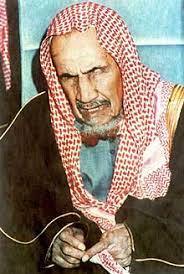
Syeikh ‘Abdulaziz ibn Abdullah ibn Baz
Zul all but looked on at the scene in front of him. The Syeikh’s actions impress him and his admiration towards the Syeikh grew. The Syeikh is truly humble. Since he has some health disability, it is difficult for him to stand in prayer, hence, he performs his Tarawih prayer while sitting. When the imam is performing rukuk, he will stand up and perform rukuk together with the imam. Zul quickly took a place near the Syeikh to witness the movements and actions of the Syeikh in prayer himself. After, tarawih prayer, Zul hurried towards the Syeikh. This opportunity may never come again.
“Assalamualaikum, Syeikh,” Zul greeted the Syeikh politely. “I’m Zulkifli bin Mohamad from Malaysia. I want to ask a question. What is the ruling of eating the flesh of a crocodile?”
The Syeikh smiled upon hearing the question of the young man from Kubang Kekura. He replied, “The scholas have differing opinions on this issue. Madhhab Hanbali ruled it prohibited. You can refer to the opinions of al-Buhuti [12], Ibn Qudamah [13] and al-Mardawi [14]. Likewise, madhhab Syafie prohibited it the same the opinion of Imam al-Nawawi [15]. Some scholars ruled it permissible. However, it is prioritized to be abandoned, wallahu a’lam.”
That night, Zul left Masjidil Haram in high spirits. So happy that he gets to perform Tarawih prayer in Masjidil haram and thrilled for the opportunity to meet and ask a question from the acclaimed scholar. This memory will surely be remembered for a lifetime. Maybe he has met many more scholars there, just that he didn’t realize who they were. May Allah SWT blesses them all, forgiving them and making all of us those who love the scholars.
________________________________
[1] Sahih Muslim (259) [2] Sahih Al-Bukhari (5892) [3] Fath al-Bari Syarh Sahih al-Bukhari, 10/350 [4] See Subul al-Salam, 709/2 [5] Surah al-Nisa’:59 [6] Tafsir al-Sya’rawi, 2360/4 [7] Sahih Al-Bukhari (1117) [8] See Al-Majmu’ (4/226). [9] Refer Nail Al-Autor (3/243). [10] See Al-Mughni (1/443). [11] See Al-Majmu’ (4/310). [12] Raudh Al-Murbi’ Syarah Zadul Mustaqni [13] Al-Muhgni, vol 9 pg. 425 [14] Al-Inshaf fi Ma’rifatirrajih Minal Khilaf, jilid 10 hal. 365 [15] Raudhah al-Talibin (3/275)